The VAP promotes freight transport by rail.
The VAP Association of Shippers campaigns for market-oriented framework conditions and an attractive Swiss rail freight system. Relevant topics:
Freight industry
- How do we shape the future of freight transport?
- What moves the freight industry?
- An overview of the players in rail freight transport.
Network
Here you will find useful information on railroads, their organization and network access.
Financing
Information on financial support and charges in freight transport.
Sites
Everything about free loading, terminals, sidings or even multimodal logistics hubs.
Interoperability
The VAP is committed to harmonizing the framework conditions so that trains can run effortlessly on European rail networks.
Sustainability
For a far-sighted future, various areas need to be designed sustainably.
Innovation
How can we drive innovation in freight transport?
Operations
In favor of fair competition, we want to utilize the strength of all modes of transport and combine them optimally. Because this makes the route shorter – and more economical – for everyone.
Events
Here you will find further information and documents on our events Forum Freight Transport, our General Assembly and others.
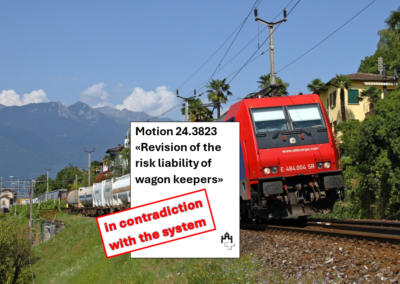
Do not unnecessarily jeopardise the well-functioning rail freight transport system
In August 2024, the National Council’s Transport and Telecommunications Committee submitted motion 24.3823 ‘Revision of the risk liability of owners of freight wagons’ by 13 votes to 8 with 4 abstentions. The motion aims to introduce strict liability and compulsory insurance for wagon keepers, including stipulating the amount of cover. The intention is to increase safety in rail freight transport. The National Council will discuss the motion on Tuesday, 10 December 2024.
This is the issue:
- The motion is in contradiction with the system
- The motion does not increase safety
- The motion torpedoes the modal shift policy
- The motion treats the same things unequally
The motion is contrary to the system
Under the current system, wagon keepers are responsible for the authorisation and maintenance of their wagons. In the event of damage, their fault is presumed if there are defects in the wagon and they are liable for the damage if they cannot prove that they have taken all the necessary safety precautions. The railway undertakings (RUs) are responsible for the operation and safety of the trains/wagons, while the wagon keepers have no influence on the safety checks when operating their wagons. Extending liability to wagon keepers would severely impair the efficiency and cost-effectiveness of rail freight transport and is therefore contrary to the system.
The motion does not increase safety
Every freight wagon is approved by the national safety authority before being put into operation – regardless of liability issues. In addition to this state approval, all freight wagons also undergo an externally certified, periodic and preventive maintenance process. For wagon keepers, the safety of their freight wagons is crucial for their reputation and an important investment and sales argument. Companies across Europe invest 1.7 to 2 billion euros in new freight wagons every year and are constantly working on safety improvements. A tightening of liability does not lead to a reduction in the risk of accidents, nor does it reduce the probability of accidents occurring and the extent of the damage they cause.
The motion torpedoes the modal shift policy
Stricter liability makes freight transport more expensive and more complicated, as the transfer of freight wagons between different areas of responsibility becomes more complex. As a result, fewer freight wagons could be used in Switzerland, as there is likely to be a lack of freight wagon capacity from abroad. This makes rail freight transport less attractive and torpedoes the modal shift policy. Switzerland going it alone would undermine the European regulations that have been developed and balanced over decades and lead to an isolated solution. In addition, Switzerland would jeopardise its important role in European freight transport, which would ultimately jeopardise security of supply.
The motion treats the same things unequally
Equal processes – towing vehicles by a towing vehicle – will be treated unequally if the motion is accepted. This occurs in the relationship between articulated lorries and goods trains, but also in the relationship between passenger and goods trains.
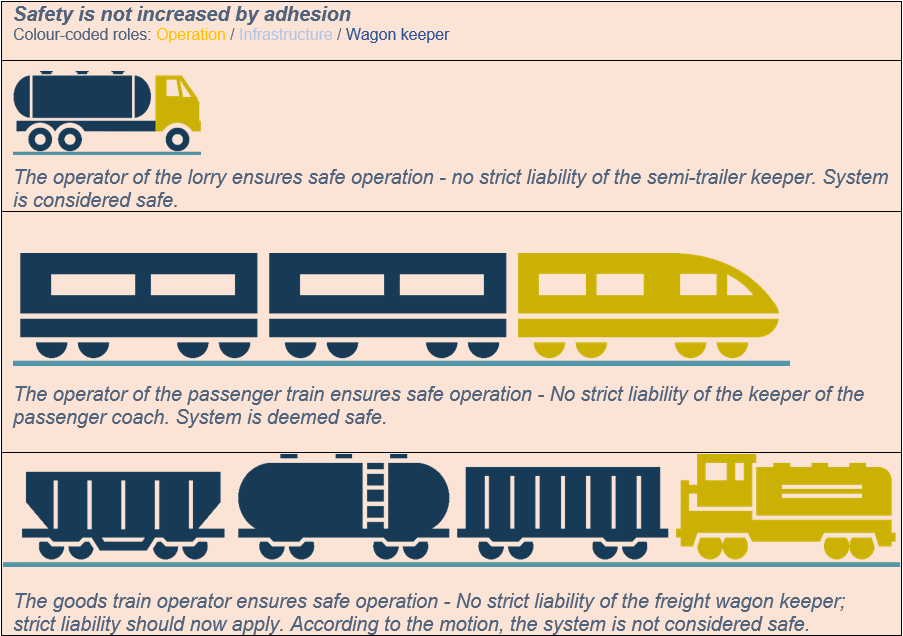
Motion 24.3823 ‘Revision of the risk liability of owners of freight wagons’ therefore fails to fulfil its actual intention. It only costs everyone involved a great deal and reduces the competitiveness of rail transport compared to road transport. The existing system already guarantees the safety of rail freight transport and offers the most efficient framework conditions for Switzerland’s modal shift policy.
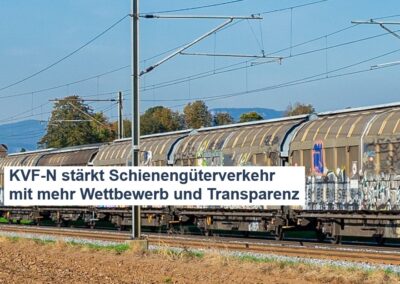
KVF‑N strengthens rail freight transport with more competition and transparency
The National Council’s Preliminary Consultation Committee (KVF‑N) is proposing that the Council approve the credits for the introduction of digital automatic coupling (DAK) and the temporary compensation for single wagonload transport (EWLV), including the ordering of freight transport, as part of its 24.017 business. It also makes some crucial clarifications to the legal text: Competition is to be promoted more intensively and cross-subsidisation between subsidised and self-subsidised services is to be prevented through the disclosure of key figures and financial flows in the annual reports of the rail freight companies. In addition, the KVF‑N wants to explicitly include inland waterway transport in the draft law in order to create more legal certainty.
On the other hand, the goal of increasing the share of rail freight transport added to the law is not very effective. This message should rather be directed at the market-dominating, state-owned SBB, which continues to drive traffic away from the railways with its current offer and pricing policy.This undermines the last of the customers’ trust in the efficiency and will of the state railway.In fact, the measures envisaged in the proposal are more effective than ambitious targets:Rail freight transport can gain market share through the planned digitalisation and the transformation from a 19th century system into the 21st century.
The increased promotion of competition between rail freight companies, in combination with the temporary compensation for EWLV, could soon lead to a broader range of services and growing market share for rail. In this respect, the more precise proposals of the KVF‑N are likely to be far more effective than non-binding modal shift targets, which are also contrary to the constitution.
Regrettably, the proposals for more transparency and competition in the construction and operation of transhipment facilities did not receive a majority.
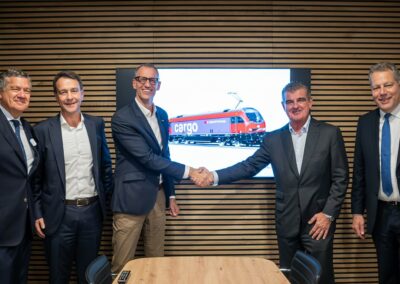
129 new locomotives for SBB Cargo: how does it work?
SBB Cargo wants to renew its fleet with up to 129 modern mainline locomotives by 2035. At the same time, it is complaining about high fixed costs in single wagonload transport (EWLV), has increased its prices excessively over the last few months and reduced its range of services. This harbours the acute danger of a shift back to the road. We at the VAP are questioning the large order and demanding more transparency.
That’s the point:
- SBB Cargo is investing in the future of rail freight transport
- Price increases and service cuts are driving away rail freight customers
- VAP questions economic reasoning and demands transparency
SBB Cargo is investing in the future of rail freight transport
SBB Cargo wants to modernise its fleet and thus secure the future of rail freight transport. In a press release dated 26 September 2024, it announced the procurement of up to 129 new mainline locomotives. The new locomotives are to be delivered between 2027 and 2035 and will replace the outdated traction vehicles. SBB Cargo presents its decision as a necessity to make rail freight transport fit for the future, which is to be welcomed. The new locomotives are more efficient, more powerful and equipped with innovative technologies such as a battery drive for last-mile transport. In this way, SBB Cargo aims to reduce operating costs by 60% and contribute to the automation of freight transport.
Price increases and reduction in services drive away railway customers
We at the VAP are asking ourselves a key question: how does the large-scale procurement of 129 locomotives fit in with SBB Cargo’s current business development and practices? In recent months, SBB Cargo has confronted its rail freight customers with massive price increases and a reduction in services (see VAP blog article «Total revision of the GüTG: The mood in the industry threatens to tip». This market-distorting behaviour could result in a reduction in rail freight volumes and an increased shift to road transport. If this actually happens, such an extensive investment cannot be justified.
VAP questions economic reasoning and demands transparency
Unfortunately, SBB Cargo is keeping a low profile on the operational and financial effects of the major project. This is not exactly conducive to confidence in the state-owned freight transport subsidiary. After all, we are talking about investments in the three-digit million range, which must be borne by the rail freight customers under the premise of economic viability. We therefore consider it essential that SBB Cargo discloses its considerations. Furthermore, we suggest that it reconsider the number of locomotives and consider leasing or partially purchasing more locomotives as a supplement to the purchase.
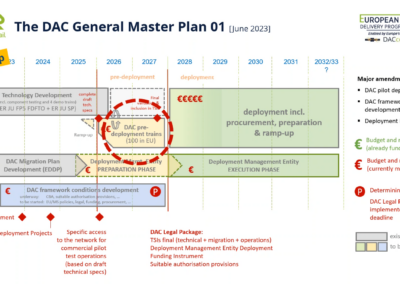
The digitalisation of rail freight transport is picking up speed
Politicians are adapting the framework conditions for the migration to digital automatic coupling (DAK) and the technology for the future standard is being defined step by step. Switzerland is harmonising its introduction process with that in Europe. As industry players, we at the VAP want to drive forward the authorisation for commercial transport and are therefore taking on a key role in the coordination and documentation of the corresponding projects.
That’s what it’s all about:
- Council of States gives green light for DAK and single wagonload transport
- GüTG harmonised with European timetable
- Technology must prove itself as a standard
- Swiss industry takes on pioneering role
- Two stages, one goal: networking with the future
- VAP transforms experience into practical solutions
Council of States gives green light for DAK and single wagonload transport
The developments surrounding the digitalisation of rail freight transport are literally running on several tracks. A course was set in the political process on 24 September 2024. On this day in the autumn session of the Swiss parliament, the Council of States discussed the total revision of the Freight Transport Act and approved the CHF 180 million credit commitment for the introduction of the DAK as well as the CHF 260 million credit commitment for the modernisation of single wagonload transport. The First Council has thus taken up the most important key points of the Federal Council’s dispatch of 10 January 2024 and, with a broad majority, has explicitly spoken out in favour of the digitalisation of freight transport with the innovation that has been refined over many years. Federal Councillor Albert Rösti said in his speech to the full Council: «In addition to digital automatic coupling, further concrete modernisation steps should be taken, such as booking platforms.» We explain why this comment reflects a holistic perspective on the DAK in our blog post «Data ecosystems: Industry round table with Federal Councillor Rösti» .
GüTG harmonised with European roadmap
The planning of the revised GüTG and the corresponding ordinance harmonises with the European roadmap. They are expected to come into force between the end of 2026 and the beginning of 2027. The budgeted federal funds for DAC migration will then be available. The stakeholders of the European DAC Delivery Programme (EDDP) of Europe’s Rail want to roll out DAC migration on a large scale from 2028. This implementation programme brings together railway undertakings, infrastructure managers, wagon keepers and the rail supply industry, maintenance bodies, industry organisations, rail research centres and political institutions. This integrated joint programme builds on research and development results and pilot projects and aims to ensure the necessary measures for a rapid, technically and economically feasible Europe-wide DAC roll-out.
Technology must prove itself as a standard
In order to achieve this ambitious goal, a developed and operationally proven technology is required. Here, too, the EDDP has already done considerable groundwork and communicated the «DAC Basis Package» as the future system standard for European rail freight transport at the beginning of 2024. The EDDP envisages pilot trains throughout Europe to refine and comprehensively test the technology of the «DAC Basis Package». The starter package contains the following components:
- DAC (mechanical/pneumatic) including energy/data system
- Recognising the train composition
- Automatic brake test
- Train completeness test
- Automatic uncoupling (in the train from the locomotive or from the carriage side)
An important system decision is still pending: For the data transmission technology in the train, the options Single via Ethernet and Powerline+ are in the final selection. As successful tests with Powerline+ have already been carried out in Switzerland, a pilot train with this technology that is ready for approval is now to be realised in the near future.
Swiss industry takes on pioneering role
Switzerland wants to make a substantial contribution to the European DAK development project coordinated by the EDDP and coordinate it closely with the EDDP’s European organisations. The Swiss railway industry is therefore preparing to push ahead with system integration for the approval of commercial applications. The technical specifications and functional scope of the «DAC Basis Package» and the Powerline+ transmission technology form the basis for the Swiss project team’s further work. Accordingly, the FOT, VAP and VöV will extend their jointly signed declaration of intent on automation in rail freight transport accordingly.
Two stages, one goal: networking with the future
Switzerland’s contribution to the introduction of DAK will take place in two stages. Firstly, system integration on the Swiss pioneer train is to be driven forward rapidly until it is ready for approval and its suitability for everyday use will then be demonstrated in commercial operations. The federal government will support the development with funding in accordance with Article 10 of the Goods Transport Act.
- The EP3 development project to realise the approval of a first pioneer train with the «DAC Basic Package» functions has begun. The aim is to obtain a FOT operating licence for defined commercial journeys on the Swiss standard-gauge network by mid-2026. To this end, around 30 motivated Swissrail members, SBB Cargo, the FOT and VAP representatives announced their intention on 30 August 2024 to jointly make rail freight transport competitive and promote Swiss DAC technology to the outside world. With EP3, the industry players want to play a key role in defining the future European standard for rail freight transport. It is now time to move beyond fundamental discussions and develop operationally viable solutions. The new systems must be robust, suitable for everyday use and affordable so that goods trains can operate successfully in the future.
- Following the completion of EP3, the EP4 development project aims to bring several DAK trains onto the Swiss rail system for commercial journeys in the period from 2026 to 2027. Initial discussions with shippers have already taken place. Isolated transport operations are being sought that are suitable for an early DAK conversion as pioneer trains. The aim of this second stage is to gather operating experience and further optimisation in real operations. The pioneer trains are intended to give stakeholders and investors involved a concrete picture of the future possibilities with DAC and the associated digitalisation of rail freight transport.
VAP transforms experience into practical solutions
We at the VAP will coordinate and document the aforementioned projects for all interested parties and stakeholders. In this way, we want to ensure a broad exchange of experience and full practicability right down to the sidings and logistics of the economy. Our members – above all the shippers and wagon keepers – are actively involved in both stages of development. In this way, findings from pilot projects can be scaled and synergies can be utilised for all industry players.
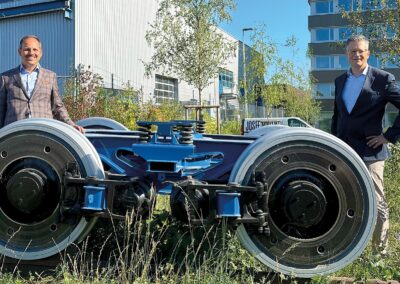
«I consider the asymmetry of benefits and implementation costs to be the biggest sticking point of the DAK»
The JOSEF MEYER Rail (JMR) Group specialises in the maintenance and repair of freight wagons and has locations in Switzerland and abroad. In an interview with the VAP, Dr Dominik Suter, owner and Chairman of the Board of Directors, and Ulrich Walt, Group CEO since September 2024, talk about the success factors of an industrial sector player, the asymmetry of innovations and the future of Swiss rail freight transport.
VAP: Mr Suter, how did the change in leadership come about and what do you expect from Ulrich Walt?
Dominik Suter: Vinzenz Bindschädler, our previous Managing Director, has decided to leave JMR at the end of September 2024. In Ulrich Walt, a long-standing industry expert is taking over the management of our Group. Together, we want to realise our vision of sustainably increasing the productivity of our railway customers and expand our group of companies in an international context.
VAP: You express your brand promise with the attributes ‘reliable’, ‘committed’ and ‘innovative’. Mr Walt, how do you intend to strengthen these attributes in the future? Where will you break new ground?
Ulrich Walt: I find these taglines helpful. Although they are somewhat generic, they make it clear what is important to our customers. The attribute ‘reliable’ in particular is crucial in the maintenance business because it has a lot to do with safety. With the attribute ‘committed’, we want to consolidate our reputation as one of the best workshops in Europe. For example, we are constantly shortening lead times and sending out mobile maintenance teams in Switzerland for minor repairs.
I will maintain our strategic course. As we are integrated into industrial processes, we cannot revolutionise our business model overnight. However, I would like to set new priorities. For example, we will focus even more strongly on our core competences of maintenance and ECM offerings. Internally, we are focussing more on management and responsibility. And finally, we also want to further optimise our systems and processes.
The term ‘innovative’ is generally equated with digitalisation. This is also the subject of lively discussion in rail freight transport, particularly in connection with digital automatic coupling (DAK). What is your opinion on this?
Dominik Suter: The promotion of rail transport in Europe requires not only the maintenance of the rail infrastructure and the DAK in the short term, but also innovations in rolling stock in the medium term. For example, years ago we developed low-noise and low-wear freight wagon bogies for significantly higher speeds together with industry partners. In a joint venture with PROSE, this has resulted in the more cost-effective ‘LEILA Light’ bogie based on a technology that is ready for approval. ‘LEILA Light’ offers impressive advantages in terms of noise, wear and tear on the rail infrastructure and speed. However, as long as the advantages in terms of noise, wear and tear on the rail infrastructure and speed do not reach the investor, there will be no investment in modern rolling stock.
Ulrich Walt: The situation is similar with DAK as the most frequently cited driver of digitalisation. When it comes to innovations for rail transport, the question always arises as to whether they should take place on the carriage or on the infrastructure. DAK is revolutionising the carriage. However, the benefits of this innovation and the costs of implementing it are distributed asymmetrically, i.e. they are incurred in different places. In such a case, it will be difficult to achieve a breakthrough. I consider this asymmetry to be the biggest sticking point of the DAK. The regulator needs to provide an impetus here. The DAK is well advanced in the political process, which is why it will prevail sooner or later.
JMR’s roots go back to the year 1888. Since then, your company has established itself as a reliable industry player. What is the secret of your success?
Dominik Suter: The secret of our success is our employees, who are ‘on fire’ for rail freight transport. Some employees have been with us for decades, sometimes even their entire professional lives. The lean structures with short decision-making channels and our customer-orientation also contribute to our success.
Ulrich Walt: I can only agree with that. We are small and agile, which is why we consistently focus on our customers. I would like to add another success factor: JMR has an engineering background. So we can do more than just maintenance, we can even rebuild entire sub-assemblies or bogies if required. Our engineering expertise keeps us in pole position.
Liability in rail freight transport is currently taking centre stage. Recommendations have also been made for the further development of the ECM Regulation. What do you think about this?
Ulrich Walt: In connection with the accident in the Gotthard Base Tunnel, the Joint Network Secretariat of the European Union Agency for Railways ERA and the Swiss Safety Investigation Board STSB issued recommendations. These have already been incorporated into our maintenance measures and our ECM services. However, I see a certain discrepancy in regulatory developments. On the one hand, the federal government wants to promote rail freight transport, for example with the total revision of the Freight Transport Act. At the same time, the competitiveness of rail freight transport would be reduced by increasing the liability obligations of the owners. Such distortions penalise private-sector market players such as JMR because they impose additional costs on us.
What strengths do you attribute to our association?
Ulrich Walt: The VAP is excellently networked with other logistics associations and players in the rail industry. It has extensive expertise that it can use to support its members. It can also be leveraged for political initiatives. I believe that the VAP has become impressively professionalised over the last three decades and is now an important voice for the rail freight industry.
What would you like to see for the VAP?
Ulrich Walt: Two things are important to me for the coming months and years. Firstly, I hope for a successful handover of operational management from Dr Frank Furrer to Dr Simon Wey. Fortunately, Mr Furrer will remain with the VAP, as he was elected to the Board of Directors at the last Annual General Meeting. This will enable the transfer of his enormous wealth of knowledge and experience and ensure continuity. Simon Wey is an experienced association man and an outstanding economist. This combination should enable him to continue the professionalisation of the association. Secondly, I wish the newly founded VAP subsidiary ‘Cargo Rail Consulting AG’ a successful start. Over the last few years, the demand for consultancy services in this area has become increasingly apparent. This subsidiary will certainly further strengthen the association.
Who would you recommend working with the VAP?
Dominik Suter: All shippers and wagon keepers and, in general, anyone who is interested in rail freight transport or is committed to it in Switzerland or Europe. The shippers benefit directly, the wagon hire companies indirectly from a fruitful exchange and up-to-date information. As a member, you are at the source of rail freight transport expertise, so to speak.
How do you see the future of rail freight transport in Switzerland?
Ulrich Walt: I have noticed two opposing trends. On the one hand, the ongoing de-industrialisation of Switzerland means that there are fewer and fewer ‘rail-friendly’ goods that can be transported by rail. On the other hand, the sustainability transformation of countless industries is putting rail at the centre of attention as a climate-friendly mode of transport and a valid alternative to road transport. It is true that rail freight transport is cumbersome because much of it is still in the hands of the state. Nevertheless, I consider the future of rail freight transport to be promising. The infrastructure, efficiency and sustainability benefits are there. Freight rail customers and legislators alike have recognised this.
Dominik Suter: Despite the climate debate and the sharp rise in the number of hours of congestion on the motorways, we are seeing a shift back from rail to road. Among other things, this is due to price increases, a lack of slots for freight transport and a lack of punctuality. There is an urgent need for action at a political level. The VAP can become a little louder here.
What has not yet been said?
Ulrich Walt: I am delighted to be working for the VAP as CEO of the JMR Group. In my new position, the work of the VAP affects me even more than it did with my previous employer. The only difference is that I look at things at JMR from an industrial perspective.
Thank you, Dr Dominik Suter and Ulrich Walt, for this stimulating interview.
|
Dr Dominik Suter is the owner of the JOSEF MEYER Rail Group and Chairman of the Board of Directors. He has more than 25 years of management experience as a CEO, board member and consultant, during which he has successfully developed numerous companies, including internationally active industrial companies in Switzerland, Germany and Austria, even in difficult situations. |
|
Ulrich Walt has been Managing Director of JOSEF MEYER RAIL AG in Rheinfelden since 1 September 2024. He has 20 years of experience in management positions in logistics in Switzerland and abroad. He has worked at Alloga and Holcim Switzerland, among others, and was most recently CEO of logistics and service specialist Fastlog. Ulrich Walt is also Vice Chairman of the Board of Directors and Chairman of the Executive Committee at VAP. |
|
JOSEF MEYER Rail (JMR) was founded in Lucerne in 1888. In 1943, the company opened a branch in Rheinfelden, Switzerland, for the production of freight wagons and welded assemblies. With the liberalisation of the railway sector in the 1990s, the company expanded its range of activities to include the maintenance of rail vehicles. Today, the JOSEF MEYER Rail Group is a leading expert in the maintenance and modernisation of freight wagons, complex repairs to passenger carriages and locomotives as well as the production of complex welded assemblies, small series and special vehicles. |
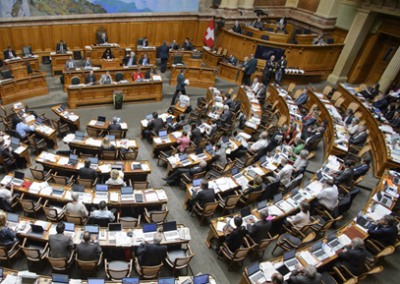
Autumn session 2024: transport policy on the agenda
In the autumn session from 9 to 27 September 2024, Parliament discussed various transport policy issues. Particular attention was paid to the revision of the Freight Transport Act (GüTG). This bill stands in stark contrast to SBB Cargo’s de facto solo effort.
That’s what it’s all about:
- Rail infrastructure 2025–2028
- Rösti and Burkart warn against drastic tariff increases
- Further financial injection for SBB
- Relocation targets for the expansion of the NEAT feeder lines
Maintain and further develop rail infrastructure from 2025 to 2028
On 23 September 2024, the National Council was the first chamber to discuss Federal Council proposal 24.045 ‘Financing the operation and maintenance of the railway infrastructure, system tasks in this area and investment contributions to private freight transport facilities in the years 2025–2028’. On 15 May 2024, the Federal Council requested a total payment framework of CHF 16.442 billion for the upcoming tasks, around CHF 2 billion more than in the previous period.
With this proposal, the Federal Council is setting the targets for the operation, maintenance and technical development of the railway infrastructure financed by the federal government for the years 2025 to 2028. For the third time, financing will come entirely from the railway infrastructure fund (BIF). The National Council approved the credit while rejecting a minority motion to increase the credit by 500 million.
At the same time, the Federal Council proposed extending the existing framework credit for investment contributions to private freight transport facilities by one year from 2021 to 2024. This is because the realisation of major projects has been delayed.It also envisages a four-year commitment credit of CHF 185 million for investment contributions to facilities for the handling of goods in combined transport (CT) and to sidings. This is to be used to finance the construction, expansion and renewal of the following components:
- CT transhipment facilities and sidings in Switzerland that comply with the concept for the transport of goods by rail in accordance with Article 3 GüTG
- CT transhipment facilities abroad that are necessary to achieve the modal shift objective in accordance with Article 3 GVVG
- Port facilities for the transhipment of CT goods
The National Council approved the Federal Council’s proposal by 194 votes to 1. The matter will now go to the Council of States.
Controversial developments in the debate on rail freight transport
On 24 September 2024, the Council of States was the first chamber to discuss the total revision of the GüTG. We reported on the latest developments in our blog post «Debate on Swiss rail freight transport threatens to derail».
With the revision, the legislator wants to enable more competition on the railways, strengthen single wagonload transport and prevent market-distorting discrimination. It wants to modernise the outdated system through automation and digitalisation, continue to provide financial support for the construction and renewal of private freight transport facilities and reimburse the HVF to freight payers as a new handling fee.
After a detailed discussion, the Council of States voted in favour of the bill by 35 votes to 3 with 3 abstentions.
This decision is in the context of the current mood of Swiss rail freight customers. SBB subsidiary SBB Cargo has been causing consternation among shippers for several weeks with disproportionate price increases – while offering the same or worse services. The consequences of this controversial behaviour are fatal. Many private-sector shippers are being forced to shift up to 10% of their freight transport volume back to the roads because transport by rail is no longer profitable. SBB Cargo, on the other hand, offers no willingness to discuss the development of alternatives.This behaviour contradicts the efforts of the GüTG revision and the consensus that was agreed between politicians, business and the state railway before the parliamentary consultation. In his speech, Councillor of States Thierry Burkart, FDP/AG, who is also President of ASTAG, emphasised that SBB’s pricing policy is not only geared towards what is perhaps necessary, but also towards what is possible in the market in order to avoid a shift back to road transport despite subsidies. In his speech, Federal Councillor Rösti also referred to three key elements in this context: loading flat rates, increased efficiency and prices, which should be optimised. These three areas are needed to ensure profitability in the end and to prevent any relocation. Based on his discussions with important shippers, he believes that the situation can be calmed to some extent and a solution found.
Further financial injection for the Swiss Federal Railways
On 11 and 19 September 2024, the Council of States and on 16 and 23 September 2024, the National Council again discussed the Federal Council’s proposed amendments to the Federal Act on Swiss Federal Railways (SBBG). After the last discussion, differences remained regarding Art. 20 on financing instruments. SBB should now be able to finance investments outside the area of the Infrastructure division entitled to compensation by means of interest-bearing and repayable loans from the Federal Treasury as long as it complies with the net debt requirements defined in the Federal Council’s strategic objectives. If SBB’s borrowing requirements for these investments exceed the net debt requirements set out in para. 1, they must be covered by capital contributions from the Confederation. The Federal Council shall apply to the Federal Assembly for the necessary capital injections as part of its budget.
The Council of States came to the conclusion that the financial support for SBB should be reduced. In the second round of deliberations on Wednesday, it voted in favour of a reduction to CHF 850 million without opposition and then released the spending brake. Marianne Maret (centre/VS), President of the Transport Committee, explained that SBB had recovered more quickly from the crisis, while the federal government’s financial situation was deteriorating. The National Council followed the Council of States and approved the reduced capital subsidy for SBB. It also ironed out the differences on loans by agreeing to a more flexible upper limit for vault loans.
The Councils’ decisions must be viewed in a broader context. In order to restore balance to the financial imbalance of the federal operation, a majority of the National Council agreed in the 2023 winter session to grant SBB a one-off capital injection in the amount of the long-distance transport losses of CHF 1.15 billion to reduce debt. Subsidiary SBB Cargo, which has already received extensive financial support in the wake of the Covid pandemic, will also benefit from this financial injection. It is about to conclude a service agreement to compensate for its network traffic, which it obviously cannot handle on its own. The private sector players, on the other hand, have neither received Covid funds nor do they have non-essential resources and investments to strengthen their investment capacity.
Balance sought between modal shift targets for the expansion of the NEAT feeder lines
The three motions 24.3389 «Advancing the expansion of the NRLA feeder lines on the left bank of the Rhine in the interests of modal shift», 24.3390 «Stabilising combined transport on the north-south axis by providing buffer tracks» and 24.3391 «For a greater modal shift to medium transport distances» came before the Council of States on 24 September 2024. The submitting Committee for Transport and Telecommunications wants to optimise the feeder lines to the NRLA.
The Council of States adopted the first two motions, but rejected the third. Their adoption presupposed a modal shift mandate for domestic traffic as well, which is not provided for in the constitution.
In principle, we welcome efficient routing on the north-south corridor in terms of security of supply, alternative capacities in the event of roadworks, punctuality and quality of rail freight transport. VAP President and member of the Council of States Josef Dittli already expressed this opinion at the anniversary meeting with former Federal Councillor Adolf Ogi in autumn 2021 (see blog post «25 years of the “Treaty of Lugano” – a look into the future»).
However, we criticise the one-sided focus of the motions on CT. Those responsible for the modal shift are thus missing the opportunity to promote other forms of multimodal transport beyond single wagonload transport. This is in clear contrast to the joint policy of the DACH states (Germany-Austria-Switzerland) to rapidly introduce digital automatic coupling (DAK). Furthermore, the motions contradict the revision of the GüTG (see above), as they pursue environmental and energy policy objectives not only in import, export and domestic transport, but also in transit.
We at the VAP demand that the Federal Council also clarify and present the potential with other multimodal modes of transport in the next modal shift report. Quality monitoring should also be introduced for conventional goods trains, as has been the case in CT for years. The distinction between combined and conventional transport must be abolished. The GüTG introduces financial support for import, export and domestic transport. In transit, however, only unaccompanied CT (UCT) should continue to receive financial support. We believe that this approach is not compatible with the objectives of the GüTG. This is because the constitutional mandate in the Güterverkehrsverlagerungsgesetz (GVVG) defines the modal shift in transit as a shift to rail, not to UCT. Only Art. 8 GVVG introduces the addition ‘primarily’ for the promotion of UCT, to the detriment of other multimodal logistics solutions with a rail component (see box).
|
Art. GVVG Promotion of rail freight transport (version in accordance with No. I of the Federal Act of 16 June 2023, in force since 1 Jan. 2024) 1 In order to achieve the modal shift objective, the Confederation may adopt support measures. These measures primarily promote unaccompanied combined transport. These measures must not have any discriminatory effects on Swiss and foreign transport companies in freight transport.amit das Verlagerungsziel erreicht wird, kann der Bund Fördermassnahmen beschliessen. Dabei wird in erster Linie der unbegleitete kombinierte Verkehr gefördert. Diese Massnahmen dürfen keine diskriminierenden Auswirkungen auf die schweizerischen und ausländischen Transportunternehmen im Güterverkehr haben. 2 In unaccompanied combined transport, the average level of compensation per consignment transported must decrease from year to year. 3 Accompanied combined transport (Rolling Highway) may be subsidised until the end of 2028. 4 The Confederation may contribute to the operator’s liquidation costs in the year following the cessation of Rolling Highway operations. |

«Modal shift requires determination from the top management team»
The Coop Group has committed itself to reducing CO2 emissions. Shifting transport to rail is a central component of this strategy. In an interview with VAP, Daniel Hintermann, Head of Logistics at the Coop Group, explains how the retail and wholesale group is achieving this and the challenges it faces.
VAP: Mr Hintermann, how did the Coop Group manage to shift two thirds of the transport between its distribution centres to rail?
Daniel Hintermann: It was a process that took several years. It was initiated in 2010 with the decision to buy a freight railway. At that time, we took over Railcare AG as a wholly owned subsidiary. We gradually integrated the small rail transport company into Coop’s logistics world. Today, Railcare is an integral part of our Group-wide transport chain. It enables us to further increase the proportion of rail transport.
How did the Coop Group come to have its own rail transport company?
In 2008, Coop developed its vision for CO2 neutrality and the centralisation strategy for logistics and production. We were looking for new approaches to transport logistics in order to achieve the goals we had set ourselves. We found what we were looking for with the Railcare concept at the time.
What proportion of rail transport are you aiming for?
We can imagine increasing the share of rail transport in Swiss delivery traffic – i.e. the outbound business – from 40% today to 50%. We see similar potential for inbound traffic from Europe and Switzerland. To achieve these goals, we are facing a challenging relocation process lasting several years.
What advice would you give to other companies that want to shift transport from road to rail?
In my opinion, the top management team needs to be determined to actively shift transport. This requires a high degree of standardisation in the equipment and close process networking between the shipper and the railway.
How does the Coop Group co-operate with the VAP?
Coop has been a member of the VAP for many years. We have repeatedly been able to count on the professional support of the VAP, particularly for contracts, project support or technical recommendations on the subject of sidings.
What strengths do you attribute to the VAP?
The VAP is particularly strong when it comes to knowledge about sensible contracts and applicable regulations. We appreciate the fact that the people in charge are available at any time and in an uncomplicated manner, take a pragmatic approach and offer practical and realisable solutions.
How would you describe the VAP?
As a central knowledge platform for all aspects of rail freight transport for the Coop Group as a shipper.
Who would you recommend working with the VAP?
All shippers who transport goods by rail or want to do so in the future.
Where do you see the most urgent need for action in rail freight transport?
Digitalisation across the entire transport chain. There is also an urgent need for automation on the last mile and in shunting traffic.
What would you like to see for the future of rail freight transport in Switzerland?
I would like to see rail freight transport become sustainably competitive. To achieve this, it must make sufficient train paths available to the rail freight companies. Finally, I would like to see more dynamism in process changes, for example when it comes to changing transport flows.
What has not yet been said?
We are seeing a trend towards over-regulation and technocracy in rail freight transport. This makes rail freight transport neither safer nor more competitive. The players involved should join forces to counteract this development.
Thank you, Mr Hintermann, for the informative interview.

Daniel Hintermann has been Head of Logistics and a member of the Coop Group’s Executive Board since 2017. His long career at Coop began in 2001 at Interdiscount, and in 2010 he became Head of Logistics Region Northwestern Switzerland. The licensed business economist gained his first professional experience in management consultancy.

The Coop Group is the largest retail and wholesale company in Switzerland. It employs 94,790 people – including 3,417 apprentices – and operates 2,633 sales outlets/markets in Switzerland and Europe. One pillar is the retail trade with the Coop supermarkets and numerous specialised formats in Switzerland, the second is international wholesale and production.
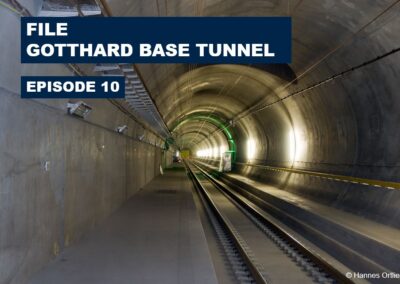
Gotthard Base Tunnel (#10): Europe presents the final report
In mid-July 2024, the Joint Network Secretariat (JNS) of the European Union Agency for Railways (ERA) published its final report on the accident in the Gotthard Base Tunnel on 10 August 2023. This contains an extended scope of application, an increased operational utilisation limit, stricter specifications for risk control measures and the recommendation of the sound test for prevention.
That’s what it’s all about:
- JNS Task Force publishes final report and impact assessment
- 4 key points for all stakeholders involved: extended scope of application, higher utilisation limit, full implementation of risk control measures, sound test for prevention
- Adapt Annexes 9 and 10 of the General Contract of Use for Wagons
- Prevent misunderstandings in the interpretation of the legal texts
- International follow-up works well
The work of the JNS aims to harmonise all measures taken following an accident or disruption to rail traffic in the EU across the EU (see blog post «Gotthard Base Tunnel (#7): Sust report provides clarity»). The committee is made up of representatives from ERA, the national supervisory authority (NSA) and the Group of Representative Bodies (GRB) representing the international railway associations. The ERA has also published the short analysis «Light Impact Assessment» as a follow-up assessment to the accident in the Gotthard Base Tunnel, focussing on the issue of ‘broken wheels’.
JNS final report contains existing and new measures
The discussions between the JNS and the industry were co-operative. They led to a number of compromises in order to avoid individual national measures announced by several NSAs. Special national regulations jeopardise interoperability and the modal shift envisaged by the EU and Switzerland.
The findings of the final report are based on the recommendations of the JNS ‘Broken Wheels’ process (2017- 2019) and its final report from 2019. Changes compared to the previous report are highlighted in yellow. The supplemented and improved risk control measures completely replace those of the JNS procedure for wheel types BA 004 (‘Crack in the rim’, 2017–2019). The measures for a ‘crack in the wheel disc’ (wheel types BA 314 old/ZDB29) remain valid.
4 Key points for all stakeholders involved
The following aspects are particularly relevant for freight wagon keepers and Entity in Charge of Maintenance (ECM):
- Extended scope of application: The scope of application of the risk control measures has been extended. The list of affected wheel types now includes: BA 004 (also used in some versions of the wheelset type VRY), Db-004sa, BA 390, RI 025, R32, BA 304 and ‘other comparable wheel types that were not part of the JNS assessment’.
- Higher utilisation limit: The operational utilisation limit (see box) for the wheel types concerned has increased from a diameter of 860 mm to 864 mm.
- Full implementation of risk control measures: For all newly affected wheel types, all actors involved must either fully implement the JNS risk control measures or take alternative measures that ensure at least an equivalent level of safety and are justified by a risk analysis in accordance with Annex 1 of EU Regulation 402/2013 (CSM RA).
- Sound test for prevention: The JNS final report lists the sound test as a simple preventive measure to reduce risks. We are of the opinion that railway undertakings should not dispense with the sound test in the event of suspected overheating of the wheelset and/or cracks on the running surface or wheel rim as part of the pre-departure wagon inspection. They should include them in their pre-departure inspection process if they have not already done so.
|
Operational utilisation limit The wheel diameter is not measured before departure or during train preparation. The operational utilisation limit is defined after maintenance. According to the ECM regulation, ECMs must define the appropriate and safe maintenance limit for wheels in order to prevent a wheel of the type concerned from being used below the operational limit of 864 mm during operation. From discussions in the JNS Task Force, the general maintenance limit has been increased from the previous 876 mm to 880 mm after wheelset profiling. Should an ECM decide to allow the use of a wheel with a maintenance limit below 880 mm after profiling, it must prove that this lower maintenance limit (1) guarantees at least the same level of safety, (2) is justified by a risk analysis in accordance with Annex 1 of EU Regulation 402/2013 (CSM RA) and (3) the risk analysis has been reviewed and approved by an independent assessment body, as an installation limit below 880 mm is considered a ‘significant change’. |
Adapt Appendices 9 and 10 of the General Contract of Use for Wagons
The JNS has submitted a recommendation to the Union Internationale des Chemins de fer (UIC), the European Rail Freight Association (ERFA) and the International Union of Wagon Keepers (UIP) as the responsible publishers of the General Contract of Use for Wagons (GCU): The committees should examine the addition of Appendices 9 and 10 to the GCU in order to regulate the detection of thermally overheated wheels even more systematically and uniformly in future.
The debate in the JNS has shown that both the national supervisory authorities of some (EU member) states and railway undertakings are finding it difficult to integrate ECMs into their activities. The JNS therefore recommends that the industry organisations hold clarifying discussions between the Member States and the European Commission and publish guidelines for rail transport companies.
Prevent misunderstandings in the interpretation of legal texts
Together with the UIP, we at the VAP will revisit the role and responsibility of the ECM in the context of the infrastructure manager/rail transport company/wagon keeper responsibility triangle. In doing so, we would like to prevent future misunderstandings about the interpretation of the legal texts among infrastructure managers and railway undertakings as the main players in accordance with the EU Safety Directive and thus also among NSAs. The current discussion in the Swiss parliament on liability in rail freight transport is evidence of the different interpretations of the internationally standardised rail freight transport regulations by various national authorities, European bodies and certain parts of the rail sector.We therefore consider the fact that the JNS has issued the aforementioned recommendation to the industry organisations to be a success of our educational work to date.
International follow-up works well
The final report of the JNS Task Force shows that the harmonised procedures for incidents and occurrences in the rail sector work extremely well at European level.
On the one hand, they allow a broad exchange of experience and, on the other, concrete improvement measures that are supported by the entire industry and all member states.
We will inform you as soon as the final report of the Swiss Safety Investigation Board Sust on the incident in question is available.
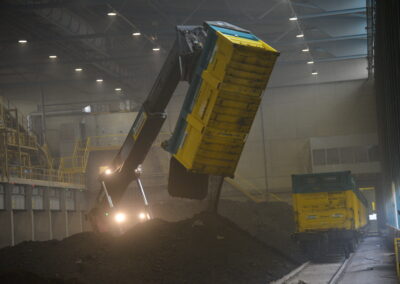
Total revision of the GüTG: The mood in the industry threatens to tip over
The Committee for Transport and Telecommunications of the Council of States (KVF‑S) has concluded its deliberations on the total revision of the Goods Transport Act (GüTG). Like the Federal Council, it wants to improve the framework conditions in favour of multimodal logistics chains. However, SBB Cargo’s current behaviour, with massive price increases and a reduction in services, contradicts these efforts and puts shippers in a dangerous dilemma.
This is the issue:
- What has happened so far
- A clear yes to multimodality and competition
- Controversial behaviour of SBB Cargo
- The Confederation has a duty
- Together out of the dilemma
What has happened so far
We have already reported in detail on the KVF-S’s initial proposals on the Federal Council’s dispatch on the Freight Transport Act (total revision of the Federal Act on Freight Transport by Rail and Shipping Companies) in our blog post ‘Now or never: groundbreaking debate on Swiss rail freight transport’. As communicated on 21 June 2024, the preliminary consultation committee wants to strengthen competition in freight transport in a targeted manner, regulate RailCom’s responsibility for enforcing a non-discriminatory offer in single wagonload transport (EWLV) and specify the content of the guidelines for rail freight transport as the basis for the EWLV service agreement.
A clear yes to multimodality and competition
The Council of States Committee has now completed its detailed deliberations. In its latest media release dated 20 August 2024, it calls on the legislator to stipulate in the regulations that loading contributions are passed on to shippers and recipients and that internal company services are made transparent and monitored.Finally, a majority of the committee suggests that an extension of the EWLV subsidy should be decided by Parliament and not by the Federal Council. In this way, the KVF‑S would like to ensure that the financial competence and the decision on a possible extension of support are at the same level
Controversial behaviour of SBB Cargo
Shippers’ tempers are currently running high over the behaviour of the SBB subsidiary SBB Cargo, which clearly runs counter to the efforts of the KVF‑S and the Federal Council’s previous statements. The monopoly provider demands a surcharge of 20% to 60% for its services – quite naturally and without cost transparency or the possibility of reducing costs from the system together with the rail freight operators. Even if the GüTG is amended as proposed and the Council of States approves the proposals of the KVF‑S, there is an acute danger that shippers will shift their transport operations to the road on a large scale. As such a strategic reorientation does not happen overnight, they will adapt their logistics concepts over the next two years. In this case, both the bill itself and the federal funding required for it would be obsolete – as would a parliamentary debate on the matter in the 2024 autumn session.
The federal government has a duty
In order to avoid unjustified market discrimination and a shift to the road, shippers could also orientate their logistics concepts towards alternative rail services offered by innovative and courageous rail freight companies and shift their transport volumes from a state monopoly to market-based competition. This would be in line with the aim of the KVF‑S, which calls for more competition through service agreements and revised guidelines on EWLV. It is therefore not insignificantly the responsibility of the federal government to initiate appropriate measures in the ordering process as soon as possible, to invite private freight railways to submit offers and to support them in their development.
Together out of the dilemma
The industry must find a way out of the current dilemma before the debate escalates. It is now up to the industry players and the federal government to work together to enable more competition and fundamentally modernise the EWLV. To do this, they must work hand in hand to change the organisation of the EWLV system, open it up more to third-party providers and develop it further on an equal footing. The private sector has already come up with some attractive solutions. If Parliament says yes to the promotion of EWLV and thus strengthens intramodal competition, shippers and rail freight companies could refrain from defiant reactions. Instead, they could – together with the SBB – seize the opportunity to finally break away from the monopolistic EWLV and develop a self-economic, broad-based network offer.